Every industry has their own jargon and set of acronyms used by insiders. Sometimes they are technical terms or language that people use to describe a precise process, a part, or a concept; sometimes, they are slang that develops among colleagues in an organization or an industry over time. But industry-specific terminology can be confusing, misunderstood, or even off-putting to outsiders. Think about the last time you tried to communicate with a car mechanic, a computer tech, or some other specialist and you couldn’t understand what they were telling you. It can be frustrating!
Insurance is no different. It’s a profession that has a lot of industry-specific terminology related to financial products and a variety of acronyms. Here are a few prior blog posts about some insurance terms that are frequently used and that customers often question:
But there are many other terms that are likely unfamiliar to a buyer – particularly when you get into commercial insurance. For example, what’s a BOP? An actuary? A captive? Underwriting? Reinsurance? Premium? Loss Ratio? We could go on, but instead we point you to some good insurance authorities that maintain various glossaries.
- The National Association of Insurance Commissioners (NAIC) has a handy Glossary of Insurance Terms that are commonly used in the insurance business. The glossary was developed by staff in NAIC’s Research and Actuarial Department based on various insurance references. These definitions represent a common or general use of the term.
- AM Best’s Consumer Center offers a Glossary of Insurance Terms.
- International Risk Management Institute, Inc. (IRMI) maintains an in-depth Glossary of Insurance and Risk Management Terms, along with a huge list of acronyms
- California’s insurance department maintains a Glossary of Insurance Terms and it also includes a list of Insurance Terms Used in the Area of Sureties and Bonds and Insurance Terms Used in the Area of Residential Title Insurance.
- New York’s Department of Financial Services offers a Glossary Of Life Insurance Terms.
Health insurance is a bit of a different matter. with its own distinct language. Here are some resources:
- Healthcare.gov – Glossary
- Kaiser Heath News offers a glossary of the most important terms in health care policy, from A to Z, compiled from multiple sources.
- Medicare.gov – This glossary explains terms in the Medicare program.
Of course, if you are buying an insurance policy and you find the terminology difficult to understand, there’s an alternative to doing your own online research – you can call your local insurance agent to talk things over. That’s where local agents excel. They can interpret the unfamiliar jargon or talk to you about the pros and cons of various options and decision points. See our prior post that talks about the value, expertise and advocacy services that agents provide 24/7: The value of working with a local, independent insurance agent.
Reprinted from Renaissance Alliance – no usage without permission.







